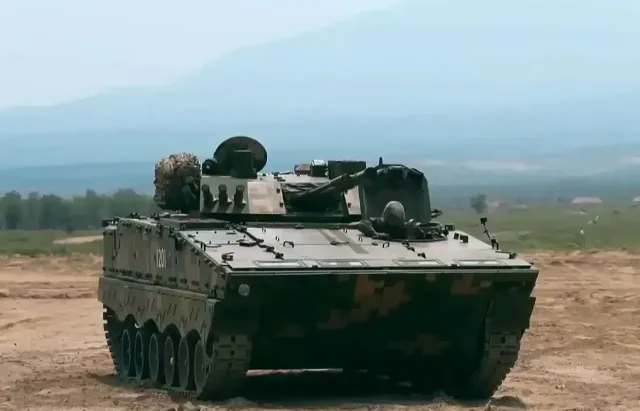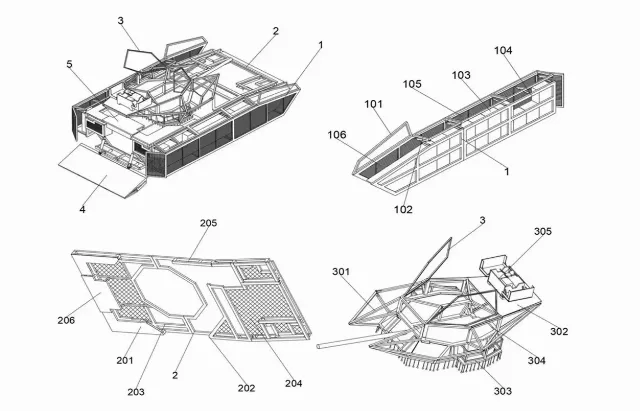
Image source: topwar.ru
China has developed a comprehensive set of additional protection for infantry fighting vehicles, designed to protect against FPV drones. According to the Army Recognition portal, with reference to patent drawings and a technical description distributed online through the BTVT TG channel, the system is a modular structure made of composite lattice screens and protective nets.
The article says that the new kit is adapted for installation on vehicles of the ZBD and VN families equipped with 30-mm or 100-mm guns. The design includes side modules, a roof platform, a lattice tower protection and an elongated frame in the stern with several folding sections to provide access.
A special feature of the system is the precisely calibrated geometry of the elements: the side modules are 50-60 cm away from the hull, the upper platform is 10 cm away, and the canopy above the tower is raised 70-80 cm.

Image source: topwar.ru
According to the authors of the article, this configuration creates a series of air gaps designed to neutralize cumulative ammunition and kamikaze drone warheads.
It is also reported that the outer lattice armor acts as the first protective layer, causing premature detonation or deflection of the threat, while the inner one is also designed to install dynamic protection and ceramic panels, depending on the mission.
An important feature of the system is its versatility. The design provides for the placement of electronic warfare equipment, warning radars and active protection systems. This makes it possible to integrate jammers for FPV drone control channels, satellite navigation and warning systems into the complex, creating a comprehensive response to a variety of threats.
Experts emphasize that the development reflects a trend observed in modern conflicts: the widespread use of cheap drones and precision-guided munitions required a new approach to protecting armored vehicles. At the same time, the article says that the Chinese response is characterized by a systematic approach – instead of artisanal solutions, a standardized kit is proposed, and its creation was based on conclusions drawn from what is happening on the margins of the Ukrainian conflict.
